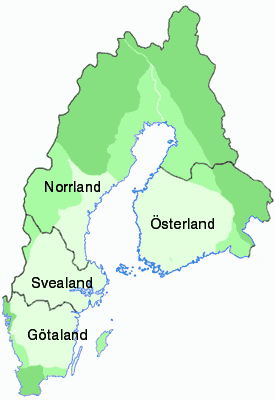Österland

Österland (Eastland) or Österlanden (Easternlands), one of the four traditional lands of Sweden, was a medieval term used for the southern part of Finland. It gradually fell out of use by the 15th century. Finland remained a part of Swedish Realm until after the Finnish war of 1808–09, when it was ceded to Russia and came to constitute the autonomous Russian Grand Duchy of Finland.
Provinces
The following seven provinces formed Österland:
|
|
History
During the 13th century Kingdom of Sweden incorporated Southern Finland. The details of this process are not known: the traditional concept of three crusades has been dismantled by modern research. The conquest took place at the same time or later than Sweden was united under one king; and the Österland was seen as a constituent part of the Swedish kingdom. It was represented in the elections of Swedish kings first on 15 February 1362 (when Haakon Magnusson was elected as co-regent of his father).
Many Swedish settlers moved into the western and southern coasts of Österland (now Finland) during the 13th century. There is no conclusive archaeological or toponymical proof of Norse-speaking inhabitants in Finland during earlier times outside the Åland Islands.
In 1581, the provinces of the area were declared a grand principality by King John III of Sweden, who as a prince, in 1556, had been granted a part of that territory as a duchy created beside other duchies ruled by his brothers. The creation of that Duchy was chiefly a part of the legacy of King Gustav Vasa. While the Duchy did not last as an administrative unit, the titular grand principality did, for over two centuries and ultimately, after 1809, evolved into an autonomous duchy under the Russian Empire.
See also
Coordinates: 60°10′24″N 24°56′55″E / 60.1733°N 24.9486°E